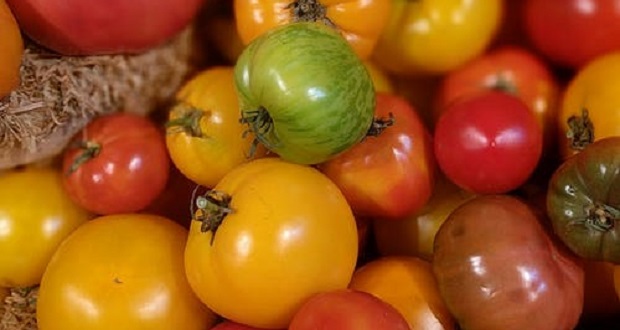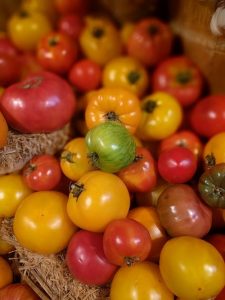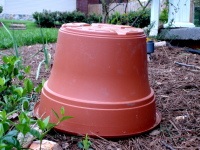By Bob Labozetta —
Whether you sowed seeds in late February/early March or you purchase plants from a nursery or the Mariposa Master Gardeners Annual Plant Sale, make sure your transplants are young, stocky seedlings instead of larger plants. They will establish more quickly and suffer less transplant shock, soon catching up in growth to larger plants.
“Harden off” your seedlings by exposing them gradually to an increasing number of daylight hours and outdoor temperatures until they can handle 6 hours outdoors. Start this process a week to 10 days before transplanting them into the garden. A sheltered location such as a cold frame or covered patio is preferable.
Even though you will be transplanting when the weather is still cool, plant in the right place for the hot, dry weather to come. Choose spots where tomatoes will receive morning sun, then filtered sun or light shade during the rest of the day. Small-fruited varieties — like cherry tomatoes — can be transplanted into containers such as pots, buckets and planters.
Read Part One of Growing Tomatoes here.
Before setting out seedlings in a garden bed, spread two inches of compost or manure on the garden soil, along with one inch of moistened peat moss and one cup of 10-10-10 organic fertilizer per 100 square feet of gardening space. Work that combination into the top few inches of the soil.
Remove the lower leaves from the seedlings and plant them deeper than they were in the seedling cells or flats. The tomato plants will produce roots all along the buried stems, giving them a better chance to withstand hot weather. If your seedlings are lanky and spindly, consider planting the seedlings at an angle, almost horizontal. Roots will grow downward from and along the stem.
Avoid planting out too soon. Traditionally, the last frost date in this area is a range of dates from mid-May to mid-June, depending on your location (and courage). If you tempt Mother Nature, take these steps when frost or freeze threatens:
● Bring containerized plants indoors.
● Water plants thoroughly before a freeze.
● Protect tender seedlings with an inverted bucket or flower pot, or a layer of mulch. Uncover them in the morning when the temperature rises above freezing.
● Cover the plants with fabric, old bed sheets, burlap, or commercial frost cloths (avoid using plastic). Drape the cover over a frame to keep it from touching the foliage. The cover should drape to the ground. Uncover them in the morning when the temperature rises above freezing.
Bob Labozetta is a U.C. Master Gardener, Mariposa
Visit our UCMG website
Follow us on Facebook
Listen to local interviews on KRYZ 98.5 FM
The U.C. Master Gardener Helpline and Helpdesk are staffed Thursdays from 2 – 5 p.m. Please contact the helpline, or leave a message by phone at: (209) 966-7078. By email (send photos and questions for researched answers) to: mgmariposa@ucdavis.edu
Master Gardener Office Location:
UC Cooperative Extension Office, 5009 Fairgrounds Road, Mariposa, CA 95338
Phone: (209) 966-2417
Email: mgmariposa@ucdavis.edu
Website: http://cemariposa.ucanr.edu/Master Gardener/






